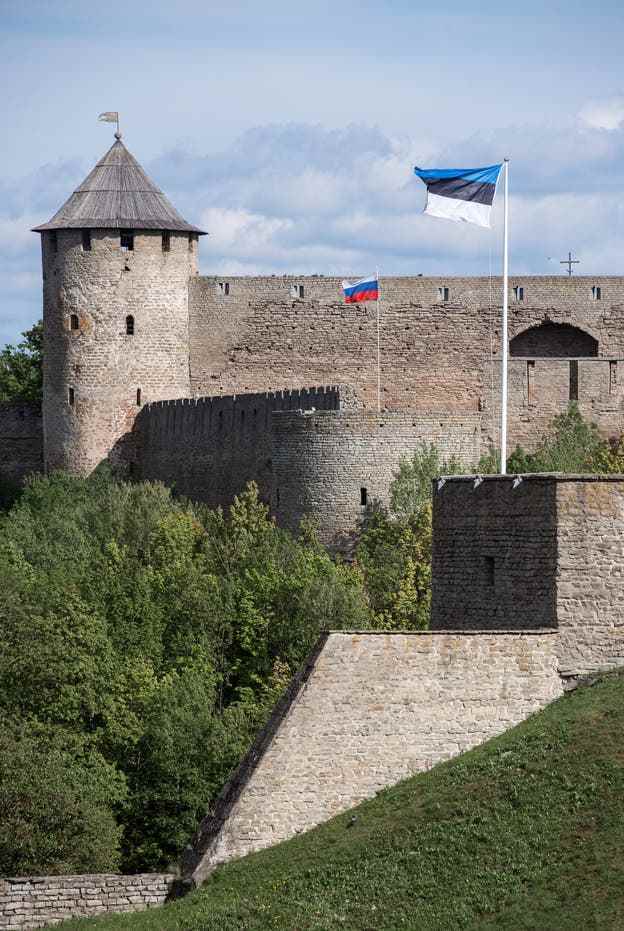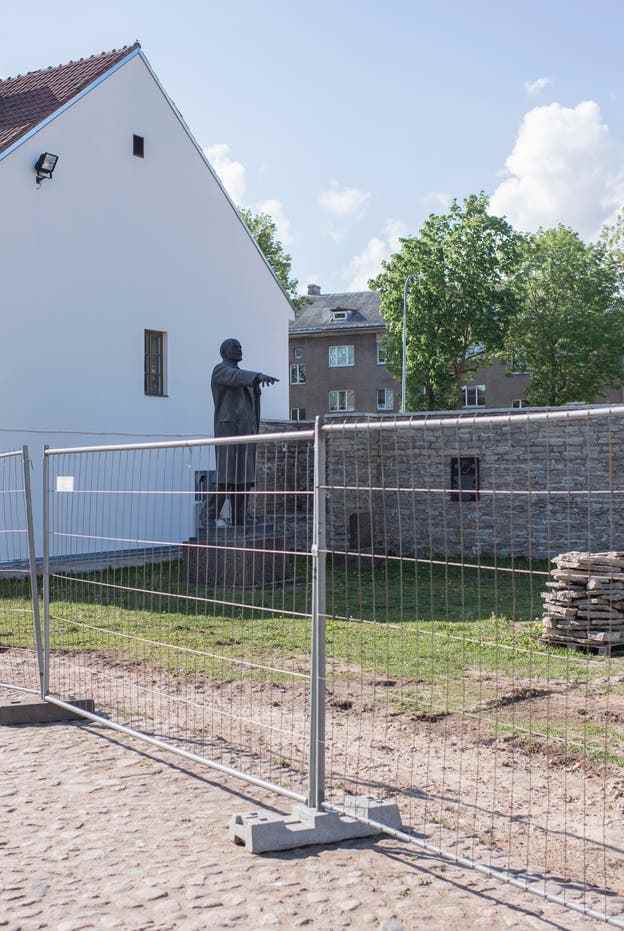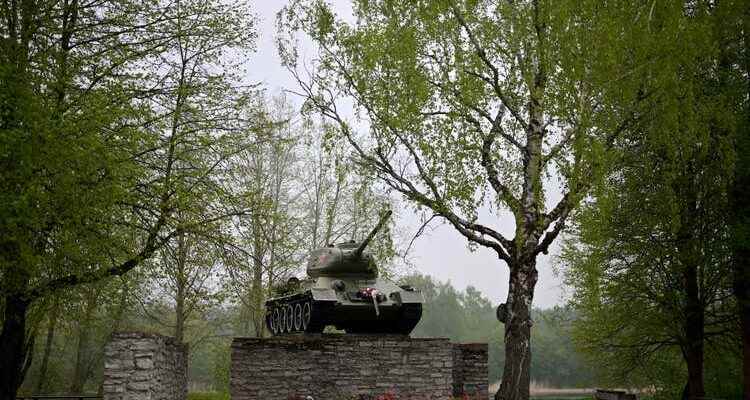The Estonian government wants to ban the memory of the Soviet past from public life. Riots and Russian cyber attacks cannot be ruled out. At the center of the controversy is an old tank.
The T-34 tank near the Estonian-Russian border is to go.
Lenin got it: his statue still stands in Estonia’s third-largest city, Narva, but it was moved to a secluded, walled-in corner in the courtyard in the 1990s. In the summer, the Russian revolutionary leader was surrounded by an ugly construction site fence.
If the Estonian government under Prime Minister Kaja Kallas has its way, all Soviet monuments in the small Baltic state should disappear from public view. And as quickly as possible – that’s what Kallas announced on Thursday.
With the beginning of the Ukraine war, the debates about Soviet monuments in the Baltic States flared up again. Estonia’s neighbor Latvia has already taken it seriously: All Soviet monuments must be removed from Latvian soil by November 15.
In Estonia, this decision harbors enormous potential for social disruption. Because about a quarter of the Estonian population are ethnic Russians. Older people in particular feel connected to Russia and the legacy of the Soviet Union. The announcement also brings back memories of the worst riots since Estonia’s independence in 1991.
Street battles over a Soviet monument
15 years ago, in April 2007, the so-called bronze soldier was transferred from the center of the capital Tallinn to the outskirts. The memorial commemorated the Soviet “liberation” of Estonia in World War II. Two days of violent protests followed: Russian-speaking youths rioted, torched cars and looted shops. Over a hundred people were injured, one man was stabbed. On top of that. Russia launched a large-scale cyber attack against Estonia. It was the first time a nation-state had been the victim of such coordinated hacking.
Today it is not the bronze soldier, but a tank that heats up tempers. About 200 to 400 Soviet monuments still stand in Estonia. But the old T-34 tank near Narva in the predominantly Russian-speaking east of Estonia is at the center of the debate about the culture of remembrance. It stands at the point where Soviet soldiers crossed the Narva River and drove the German occupiers out of the city. The river today marks the Estonian-Russian state border.
After the first rumors about the removal of the tank began to circulate in public on Wednesday afternoon, about 150 people gathered at the monument in the evening, according to the Estonian public broadcaster. Some wanted to stay the night to prevent an alleged removal of the tank.
Relocating the tank is legally problematic. Because the central government can only decide on the relocation of war memorials with human remains. Other monuments, like the tank at Narva, are the responsibility of the local administration.
Prime Minister Kaja Kallas admitted that the city of Narva has the right to decide the fate of the tank. “But because it is clear that Narva itself will not intervene, the Estonian state and government must make the decision to move this and other monuments of symbolic value,” said Kallas.
The corresponding law would have to be changed for this. Foreign Minister Urmas Reinsalu has already suggested calling MPs back from the summer break so that they can vote on a change in the law as quickly as possible.
Where do the Russian-speaking Estonians stand?
Just a week ago, Narva Mayor Katri Raik said on Estonian radio that removing the tank would only create unnecessary divisions. According to the mayor, most of Narva’s residents wanted to keep the monument in its current location.


Picture left: Narva is located directly on the Russian border. Picture right: The Lenin statue has already been relegated to a corner.
Nevertheless, it would be wrong to blame the entire Russian-speaking minority in Estonia should the monument dispute escalate, says Karsten Brüggemann. He is Professor of General and Estonian History at Tallinn University and researches the history of Russian-Baltic relations. «In April, 2007 hasn’t the Russian minority demonstrated against the implementation of the bronze soldier. There were a few hundred – partly incited by the Russian embassy”.
However, even now, riots cannot be ruled out. “You’ll always find those few hundred who would salute a Russian tank. Especially in Narva,” says Brüggemann. “But that doesn’t mean that the majority of Russian-speaking Estonians are behind it. On the contrary: This is a radical, dissatisfied minority whose displeasure could unfortunately be activated again.”
